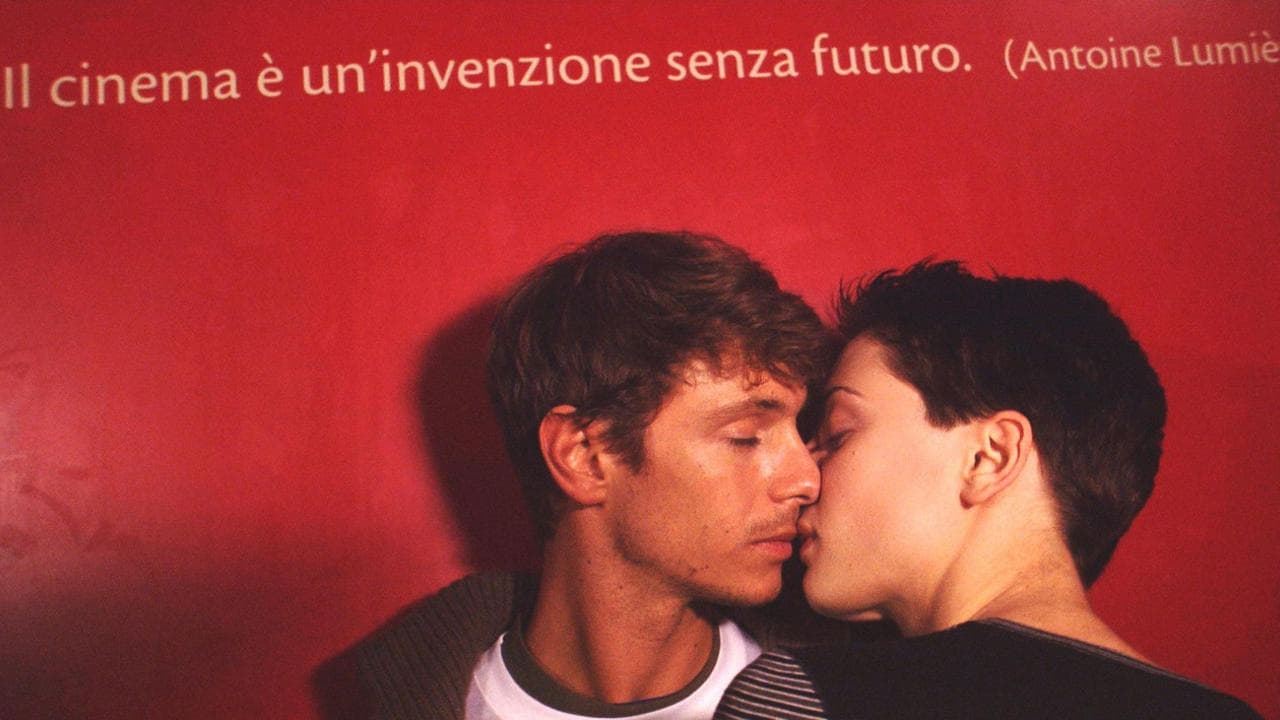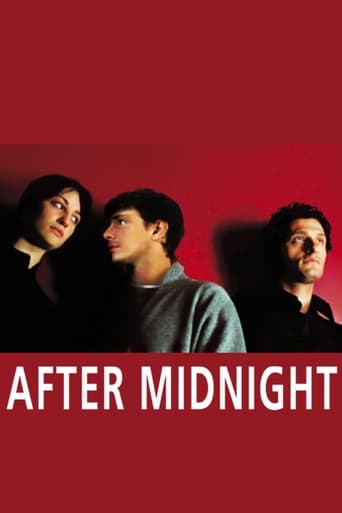Livestonth
I am only giving this movie a 1 for the great cast, though I can't imagine what any of them were thinking. This movie was horrible
Grimossfer
Clever and entertaining enough to recommend even to members of the 1%
KnotStronger
This is a must-see and one of the best documentaries - and films - of this year.
Cassandra
Story: It's very simple but honestly that is fine.
robert-temple-1
This is a spectacular achievement, of a perfectly-judged fable whose every moment and every detail is successful. It was made on a shoestring (they even had to wheel the camera in a supermarket trolley because they could not afford a dolly), but the production values look like and feel like a big-budget movie. The cinematography is deeply intriguing, partially due to the use of a highly light-sensitive digital camera, which is able to film in dark and moody places by natural light. Davide Ferrario, the writer, producer and director, is a unique cinematic artist. It is insufficient to call him brilliant, and even the word 'inspired' seems too tepid to do him justice. I would prefer to call him 'a force', like the wind or the waves. This magical film captures a kind of metaphysical power of the imagination, which transforms reality in front of our eyes. All except one member of the cast were unknowns. The project was a huge risk. But the result is a complete triumph. The casting was perfectly judged, and the performers more than delivered the goods. The only one with experience, Giorgio Pasotti, says little because he plays a silent character, but evokes the character's inner being with total success. Even more astounding is the performance by Francesca Inaudi, and she is more than 'a natural', she is a 'supernatural', whose facial muscles were designed for film-making. Another star of the film is a bizarre and gigantic building in the city of Turin called 'the Mole'. It is one of the most mysterious film sets ever used, and what is more bizarre, it is all real. Nothing about this film is 'normal', thank God, since what is more boring than normality? And yet nothing is abnormal either, it is just that it is all happening in the imagination, which transcends the difference. Two stories intersect, like two intersecting light-cones in space-time, and from the crossing of their beams, brilliant and scintillating interference patterns emerge, and then the individual stories are re-directed and electrons and positrons spray out in different directions. The film is about a collision of two parallel universes. No, three. The third is us.
roland-104
This is a wonderfully inventive romantic comedy set primarily within the Mole Antonelliana, a fabulous 19th Century building in Turin that since 2000 has housed the Italian National Museum of Cinema.The love story is a triangular dilemma in which a young woman loves two men and cannot force herself to choose one over the other. Amanda (Francesca Inaudi in her film debut) is a fast food clerk whose life seems to be heading nowhere. Her boyfriend Angelo (Fabio Troiano) is a car thief and control freak who seems more closely bound to his trio of henchmen than to Amanda. Though handsome and charming in his way, he never stays the night and forgets about their dates.Then one evening Amanda urgently needs a place to stay and accidentally bumps into Martino (Giorgio Pasotti), a solitary cinephile who works and lives in the Museum, located near the burger joint where she works. He takes her in, and things begin to change for everybody.Martino hardly talks at all. For him life on the silver screen is reality, so he sees little point in social ties or even leaving the Museum, except for trips to the fast food place when Amanda's on duty. He hates the food but buys it anyway as a pretext to be close to her. He is so unobtrusive that she had never before noticed him, but for Martino, she is the dear if distant object of his total affection. He actually creates a film about the history of Turin, embedded within which are shots of Amanda taken from a distance.Buster Keaton is Martino's role model for conducting a relationship with a woman. The Keaton formula for success in love necessitates a series of struggles, pratfalls and temporary defeats ending in shy, glancing kisses and handholding. When circumstances dictate that Amanda stay in hiding at the Museum for several days, Martino proceeds to approach her in the Keaton manner. This isn't exactly Amanda's cup of tea. Their cavorting over the ensuing days is one of the more endearingly humorous sequences in recent cinema.Once Amanda is reunited with Angelo, he senses immediately that something has changed. He cleans up his romantic act, but his reforms come too late to neutralize Amanda's affection for Martino. Inspired by watching Buster Keaton take on a gigantic man to win the favors of the woman he loves, Martino comes to challenge Angelo. Priding himself on being 'principled,' Angelo proposes that, rather than him and his gang beating Martino to a pulp, the two lovers should instead let Amanda choose between them and abide by her decision. But she will not choose, leading to some amusingly awkward dates for the trio.The story is narrated by a sage fellow (Silvio Orlando, never seen) who treats the viewer almost as a godlike partner, joining him in enjoying the follies of these three earthlings. Actually it's four: I've left out Amanda's roommate, Barbara (Francesca Picozza, also making her film debut here), a beautician with horrid hair and makeup who lusts after Angelo and believes that love is always a zero sum game.All four principal roles are well acted. Distinctions in personalities of the characters are made vividly clear. Miss Inaudi is captivating. She is poised - confident, relaxed and natural - in her movements and speech, and has ivory skin, warm almond eyes, and a sweet, simple little smile that charms. But for me there's nothing quite as sexy as a broken looking nose on a woman (I think of Kristin Scott Thomas, for example), and Inaudi's marvelous shnozz looks like she took a tough blow sometime long ago, though most likely this feature of her anatomy is genetic.In fact, the most striking member of the cast is the Museum itself. Built between 1863 and 1889 as a Synagogue, it is one of Europe's largest masonry buildings. The City of Turin has owned the place since before the turn of the last century, and it was entirely remodeled in the late 90s so that the Cinema Museum could be relocated from the Palazzo Chiablese to these more dramatic quarters.The place has been designed to function something like the Guggenheim Museum in Manhattan, though it's much larger and more grand. The dominant feature of the building is a giant cupola. Now a glass walled elevator takes visitors high up into the cupola, from where they can descend, strolling on an inclined walkway that spirals downward past numerous displays on movie themes. The main floor houses a richly upholstered theater for larger screen presentations.The love triangle is, of course, too unstable to last, and it doesn't. Things do sort themselves out in the end, in a manner that, in the final scene, poetically entwines the boundaries of reality and cinema in the most visually lovely manner. This film reflects an inspired level of imagination on the part of Davide Ferrario, who wrote as well as directed. Its self-styled connections to great cinema from the past are not for a moment pretentious. This is a respectful homage, and, besides that, it's one terrific movie. (In Italian) My rating: 8.5/10 (A-). (Seen on 04/28/05). If you'd like to read more of my reviews, send me a message for directions to my websites.
maisannes
After Midnight (9 out of 10)Give me the Italian love of cinema and love of love over the French any day of the week, well, maybe 6 out of 7.Here we have a movie about movies shot on digital video with a genre plot and some postmodern reflexivism thrown in. In the hands of a certain French New Wave director whose name I refuse to type, who in fact has used all of these devices himself, these tactics would be used at times to alienate, to smirk, to nudge-nudge-wink-wink, and to create narrative distance or irony. Ferrario uses them for all their worth, but with a consistently joyful embrace of both his characters and his audience. It's as if all 95 minutes of Band of Outsiders were running through the Louvre and dancing the Madison.Any movie that keeps a smile fixed on my face from start to finish deserves a superior mark, even if it doesn't have the depth or reach of other movies I rank as highly.
smdusk
The 2004 new movie by one of the most intriguing Italian directors. Despite of a low budget and a not-famous cast (except for the narrating voice), this movie is purely entertaining and involving: fascinating sequences inside the Turin's wonderful Mole, actual venue of the most important Italian cinematographic museum. Not-so-profound characters and dialogs, and sometimes a bit of inaccuracy in playing, but a sincere view in the struggle for love, solitude and boredom. Very nice editing with sequences of early cinema movie clips, especially by Buster Keaton.

